22 Years after Genocide, Rwandans Have Forgiven, Not Forgotten
In Summary: 22 Years after the 1994 Genocide, Rwandans Have taken a firm grip of the Present and have Set their Sights on the Future with unwavering confidence. With unity of purpose, singing from the same hymn book, they have collectively picked-up the pieces, and are lighting and smoothing-up the rugged path of transformation for the rest of the world to notice and emulate. As Samuel Muwanguzi writes, by all accounts, the 22nd commemoration of the genocide against the Tutsis in Rwanda held at the Disciples of Christ Mission church in Hurst, Texas, shows that citizens of this small and mountainous Central African country have Forgiven But Not Forgotten the Past.
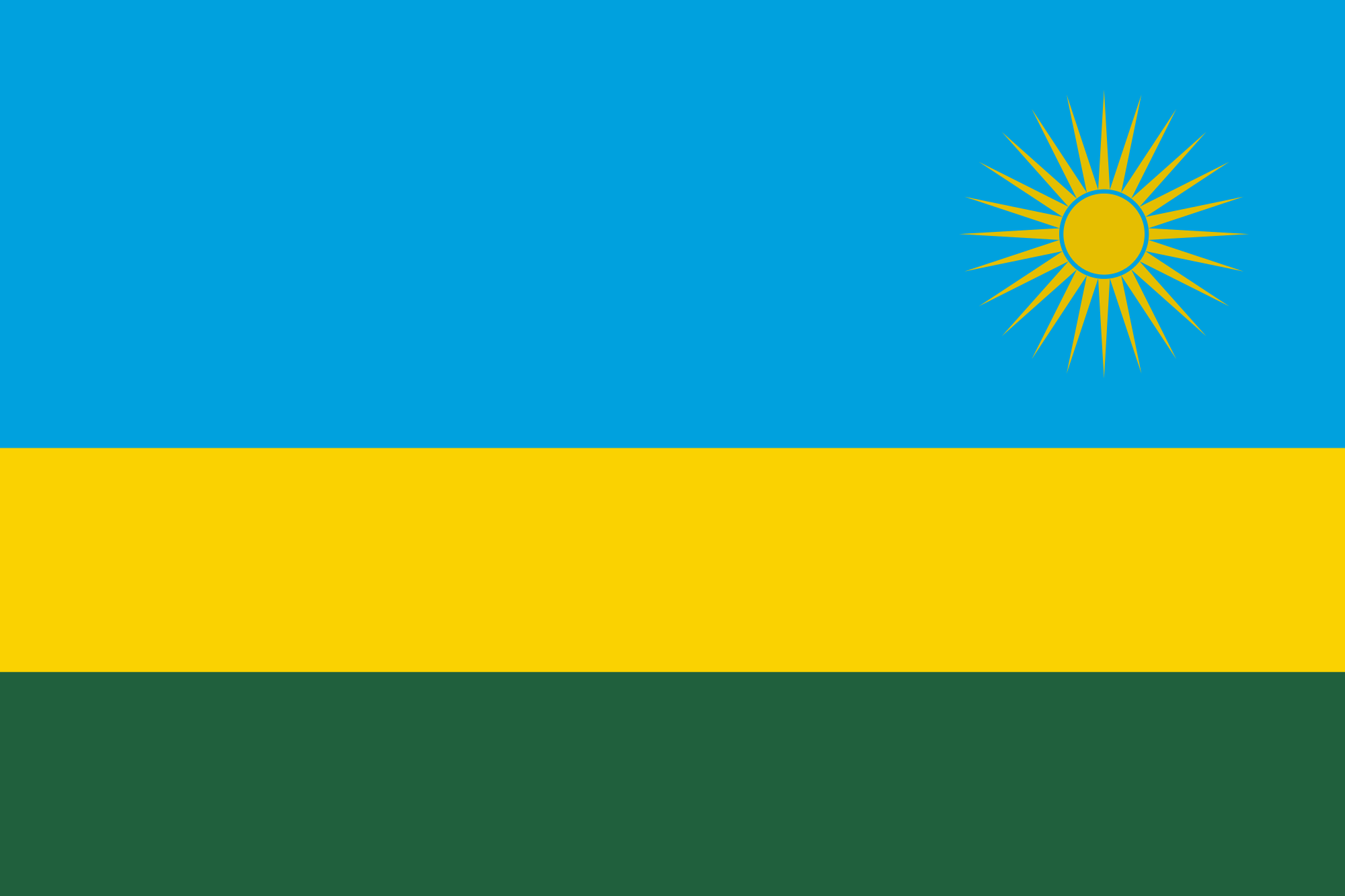
Rwandan Flag
Hurst, Texas—Events commemorating 22 years since the end of the genocide against the Tutsi’s in Rwanda in 1994 served as a universal rallying cry for unity to fight the genocide ideology to ensure that what happened never happens again in Rwanda or anywhere else in the world. The commemoration, organized by the Rwandan American Community in Dallas-Fort Worth (RAC-DFW) at the Disciples of Christ church in Hurst, Texas on Saturday April 30, included a remembrance walk, prayers, a sermon, a testimony by the then a 9-year old survivor, a video clip depicting how some individuals defied the genocide perpetuators to save lives of Tutsis, speeches denouncing the genocide ideology, and a candle-lighting ceremony.
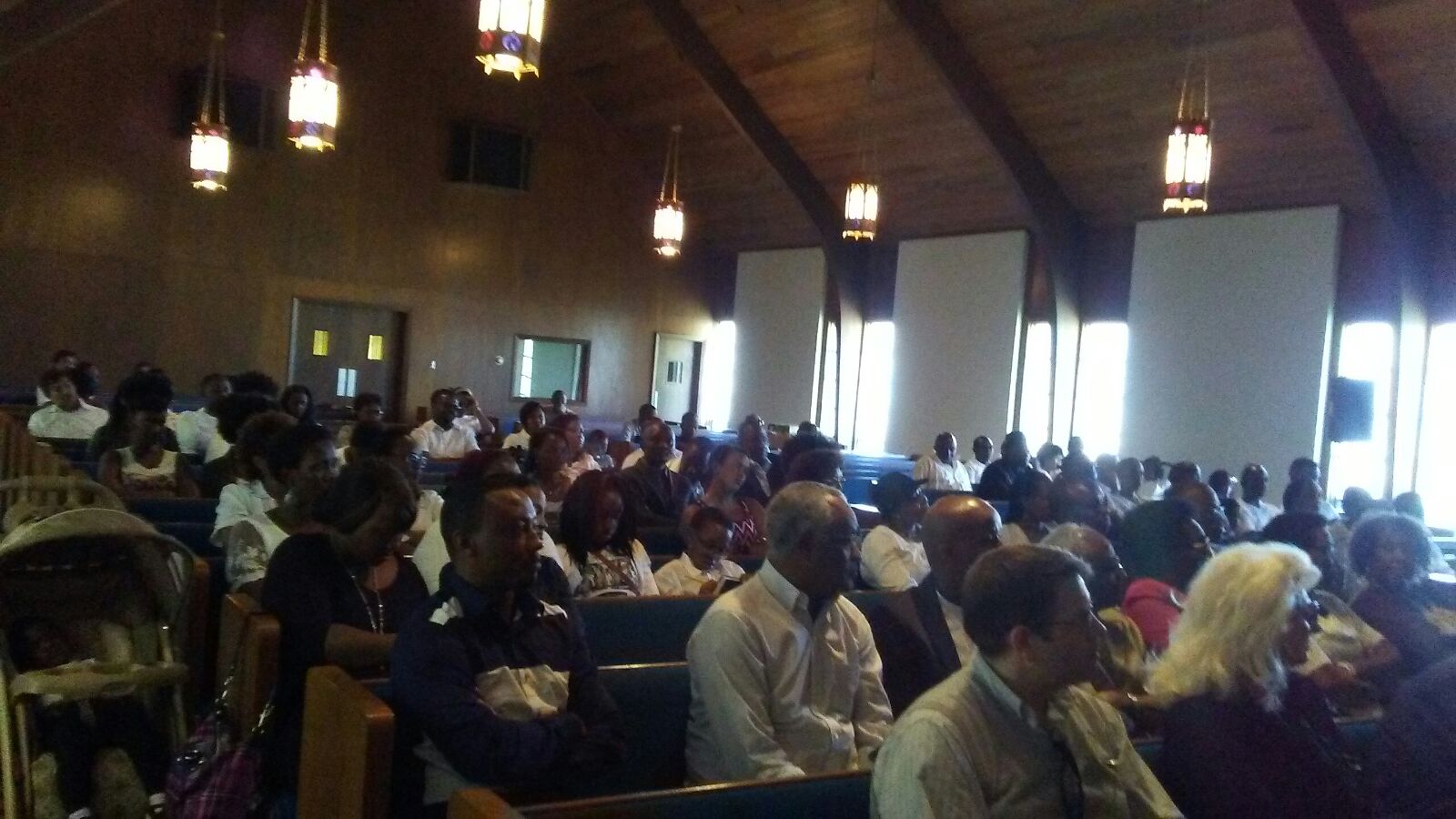
Nearly a million people were massacred during the 1994 genocide in Rwanda in approximately 100 days. “Commemoration, ‘Kwibuka’, the Kinyarwanda word for ‘remember’, describes the global commemoration framework,” Sam Mbanda, President of RAC told the EADM on the sidelines of the event.
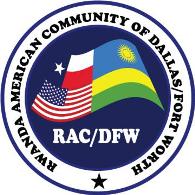 While depicting the horrors of genocide in Rwanda, the events also underlined the reconciliation and healing processes in the country, comforting survivors, honoring the dead, drawing parallels between the genocide and the holocaust, inspiring humanity to relentlessly condemn and debunk the genocide ideology once and for all, and showcasing the giant strides the government has taken in uniting the country and reconstructing the economy for the benefit of all its citizens.
While depicting the horrors of genocide in Rwanda, the events also underlined the reconciliation and healing processes in the country, comforting survivors, honoring the dead, drawing parallels between the genocide and the holocaust, inspiring humanity to relentlessly condemn and debunk the genocide ideology once and for all, and showcasing the giant strides the government has taken in uniting the country and reconstructing the economy for the benefit of all its citizens.
The well-organized event was attended by over 300 Rwandans and leaders from the African Diaspora communities from Kenya, Uganda, DR Congo, Tanzania, Burundi, and Nigeria, among others, including leaders from the East African Chamber of Commerce, and a board member of the Holocaust Museum of Dallas, Mr. John Kessler. Mr. Alex Karundu, chairman of the Kenyan Diaspora community in DFW led the Kenyan delegation while the East African Chamber of commerce was represented by Chairwoman Elsa Juko McDowell, Secretary Robert Muruli, and board member and Treasurer Benson Kasue.


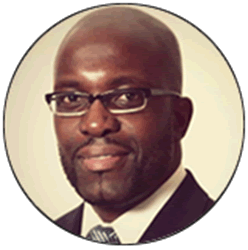
The First Counsel at the Rwanda Embassy in Washington DC, Mr. Lawrence Manzi presided over the events on behalf of the Rwandan Ambassador to the USA Dr. Mathilde Mukantabana. The commemoration event was heralded by the singing of the two National Anthems of Rwanda and the USA by two teenagers; Melissa Keza and Blessed Akamanzi. The Mistress of Ceremony, Hope Agasha, the Vice President of the Rwandan American Community of DFW, who also doubled as the translator from Kinyarwanda to English, helped other African Diaspora communities to keep abreast with the goings on. The prayer, sermon, testimony, and most of the speeches were largely delivered in Kinyarwanda.

Earlier, hundreds of Rwandans with their guests led by Mr. Lawrence Manzi and the local leaders took part in a 45-minute remembrance Walk from the Church that started at 2:00pm and ended at the same venue at 2:45PM. “The walk serves to honor those who were killed and is a reminder to all Rwandans of the genocide and of the duty we have to keep walking, moving forward, owning our history no matter how tough it was, taking the responsibility of writing our authentic and clearer history, and holding our destiny in our hands,” Emmanuel Sebagabo, Secretary of the Rwanda American Community told EADM after the walk.

Pastor Stephen Amani of the Disciples of Christ Mission Church, also a gospel super-star singer led the opening prayer while apostle Mechak Rwumbuguza, a senior Pastor at the same church delivered the sermon at the occasion. Reading from the gospel of John 11:35 which recount the story of Lazarus, the dead man Jesus Christ raised from the tomb, four days after he was buried. Apostle Mechak Rwumbuguza spoke of the enduring hope Christians should have in the resurrected Lord Jesus Christ. He said Jesus has the power to restore life to the dead and can change what we consider impossible situations possible. Drawing parallels between the story of the raised Lazarus and the post-genocide Rwanda, Apostle Mechak Rwumbuguza declared that hope for Rwanda is as alive as the dead Lazarus was restored to life, reversing a tragedy into joy, hope, and prosperity.
“We thank God that post-genocide Rwanda is moving forward, Rwandese are reconciled, living, united, walking and moving forward, prospering, and building a country for all Rwandans under one leadership,” he said amidst choruses of hallelujah from the congregation. He said that when the genocide took place in 1994, agents of doom thought that Rwanda was finished and would never rise up from the ashes. However, he thanked God for guiding the RPF government led by President Paul Kagame for removing the rock that had closed Rwanda into the tomb just as the case was with Lazarus.
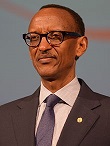
Apostle Mechak said that God removed the rock which was blocking Rwandans inside the tomb paving a way for reconciliation and forgiveness, rebuilding one country for all Hutu and Tutsis living together in love, collectively condemning the horrific past, and standing up to never allow the genocide ideology to thrive again. Addressing himself to the resilience of the Rwandan people, Apostle Mechak Rwumbuguza said Rwandans have now forgiven the past, are enjoying peace and security of person and property, freedom of speech, freedom of travel, equally accessing opportunities for Tutsis and Hutus, and are benefiting from the economic developments in the country. “We thank God for blessing Rwanda with a leadership that is promoting social, economic, and political transformation of the country for all citizens,” he declared as the audience responded with shouts of approval.
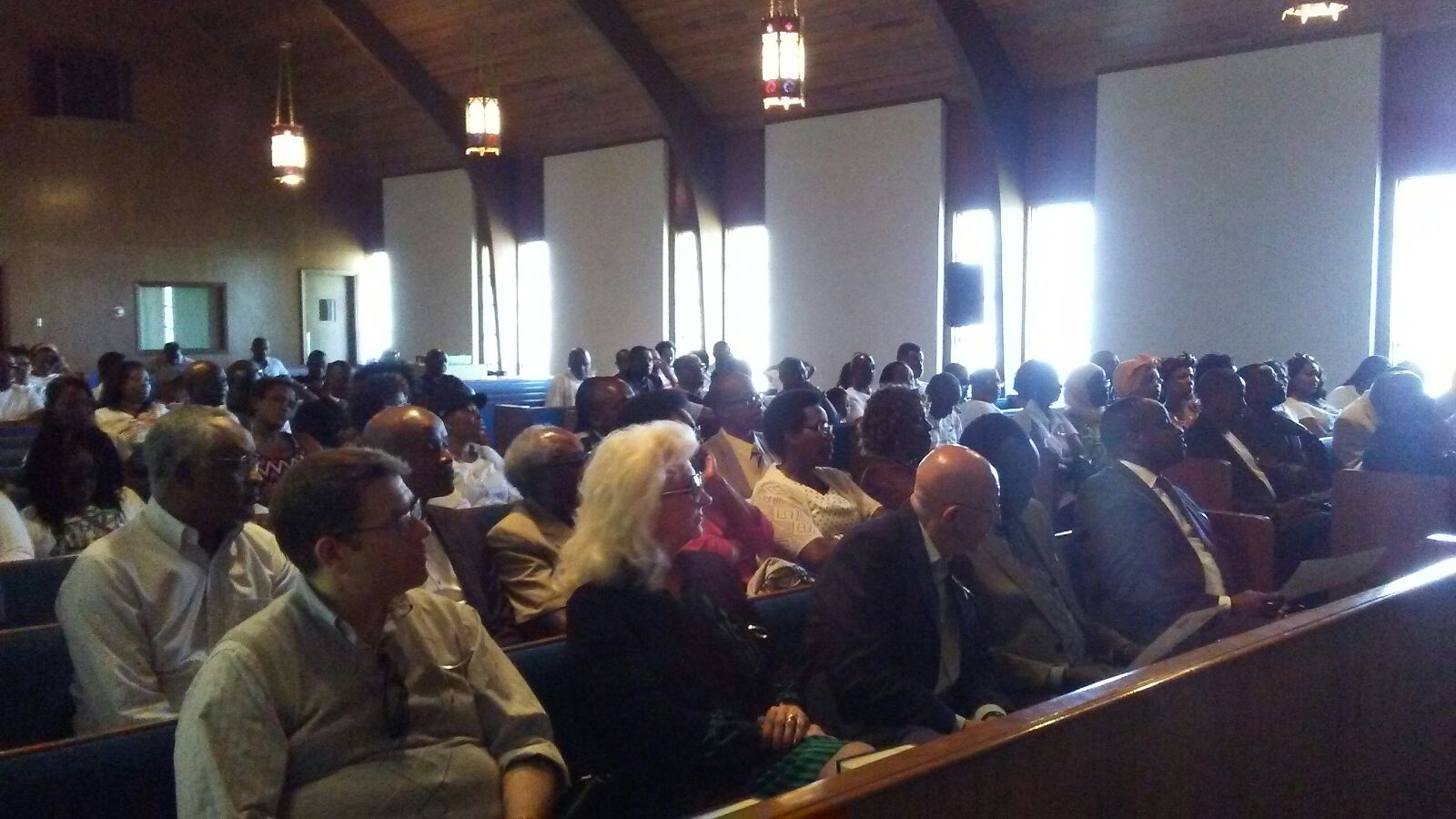
The high point of the event was a testimony given by a survivor of the 1994 genocide in Rwanda at the now infamous Nyarubuye Roman Catholic parish memorial site. Valentine Iribagiza, then 9 years, spoke of her nearly two-month horrifying ordeal after she was left for dead following the killing of her parents, siblings, and village mates. Her testimony, a victim's-eye view of the Nyarubuye massacre, delivered in Kinyarwanda and translated by Hope Agasha, the MC, evoked tears, sympathy, and encouragement from the packed church sanctuary.
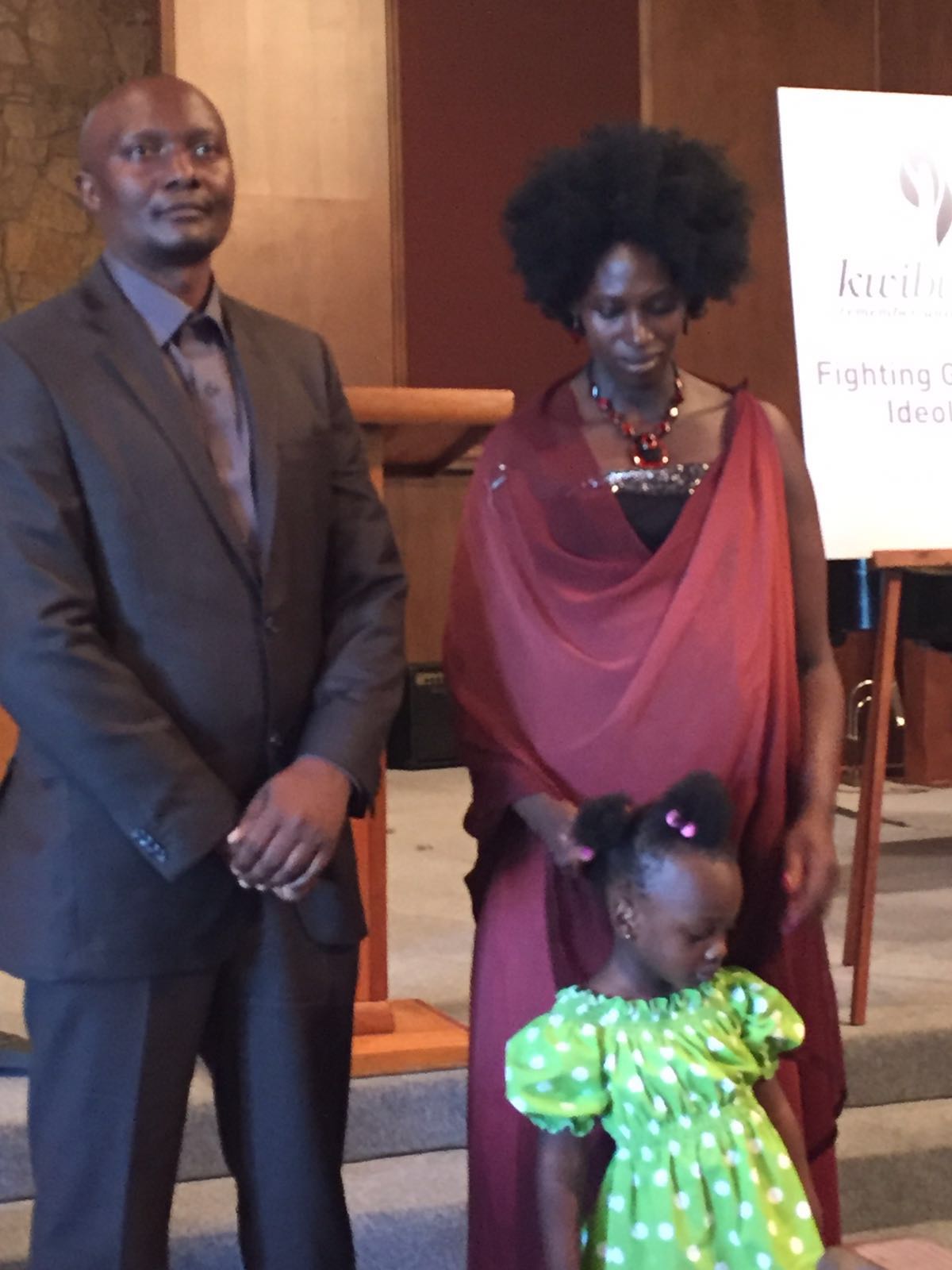
For 45 days, Valentina Iribagiza, seriously wounded, hungry, and thirsty, lived among the dead at the Nyarubuye church compound where thousands of Tutsi villagers had taken refuge from the marauding Hutu extremists, most of them their neighbors. Nyarubuye, located in the eastern Kibungo province near the Tanzanian border, is the third national church genocide memorial in Rwanda. “My father and mother were killed in my full view by clubbed-wielding Hutu militias supported by the military. Some hacked their victims using machetes, stones, hoes, spears and any rudimentary weapon they could lay their hands on,” she told a bewildered audience. During a- four-day orgy, from April 11th to 14th, Hutu militias infamously referred to as Intarahamwe, combed the entire countryside “claiming that snakes, rats, or cockroaches, referring to Tutsis, had to be killed and none left alive,” she recalled to reactions of teary sobs and jeers from a restive audience.
“I was hit on the head and felt blood oozing from the deep cuts, some bones in my left hand were broken and I could see some pieces flying out, and some of my ribs were broken by my tormentor who knew me and my parents,” she narrated. According to Valentina Iribagiza, in 1994, the local mayor of the area told all Tutsi to hide in the Nyarubuye church and promised them protection from the rampaging Hutu militias. To their shock, she said, “the Mayor and the Interahamwe came and started killing, using machetes, sticks, woods with nails, hoes, axes, stones, spears, and other weapons.” . The killers moved into the terrified crowd of men, women and children, hacking and clubbing as they went, she recalled.
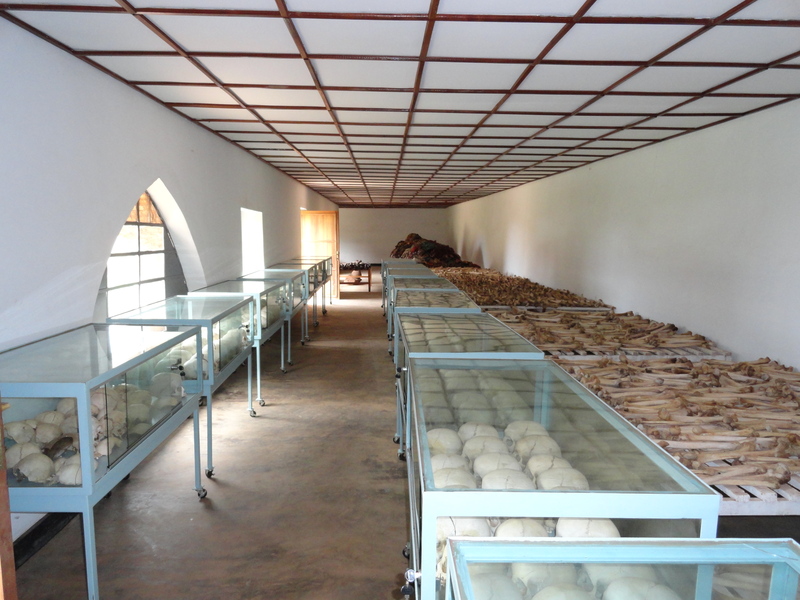
“I recognized many of our Hutu neighbors among the more than 30 men who surrounded the church and participated in the killings,” Valentina told the edgy audience. “Their leader said that we were snakes and that to kill snakes they had to smash their heads,” she recounted, adding, “they carried knives and clubs and was supported by soldiers from the Rwandan army. She said that her parents and some of her siblings were hacked to death and although she was hit, knifed, and chopped, she did not die, she narrated with a discernible sense of victory in her voice.
“I knew the person who tortured me,” she continued, adding, “he told the other killers: “Leave that one to me. I know what to do with her.” She said that after thoroughly beating, cutting, and chopping up her and other children, they left them thinking they were dead. Early the following morning, she recounted, “I saw my father laying a few feet from me and I crawled and went and slept on him thinking he was alive. I wanted my father to protect me from the tormentors who I knew very well. Yet, my father was already dead,” a revelation that drew more emotional reactions from the increasingly agitated audience.
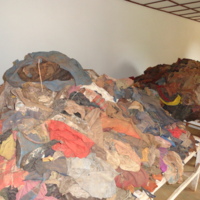
“It was raining and my wounds were worsening each passing day, she said, adding, “I lived among dead bodies and they kept piling more on me yet I was injured and bleeding in the head, ribs and hand but I survived.
She disclosed that for four days; 11, 12, 13, & 14 of April 1994, killings continued indiscriminately as killers came and took little children and smashes their heads together until they were dead. There were children who pleaded for mercy but were killed instantly, she revealed. Other infants, she recalled, crying on the ground beside their murdered parents, were taken and plunged head first into latrines. At night, while the killers rested and guarded the place so that nobody escaped, wild dogs came to eat dead bodies,” She said, adding, “once a dog came to eat me but I grabbed a stone and mustered some energy and scared it away. Every morning, the killers came to finish off all those who were still alive and if they found someone alive they would smash their heads with stones, she told the somber audience.
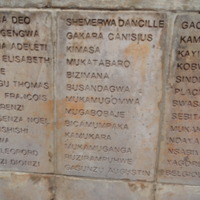
For the next 45 days, she said, she lived among the rotting corpses, too weak to stand up and that she became increasingly convinced that the world had come to an end. "I prayed that I would die because I could not see life in future,” she said. She drank rainwater and crawled to rummage in the wild for fruits. “I saw soldiers come but I hid because I was not sure who they were as I thought they had come to finish off those who were not dead. I hid. I was hungry, thirsty, hurting, and my body was dying in parts but I survived and I think I lived for those 45 days for a purpose,” she narrated.
“I was rescued by soldiers but I did not know who they were. They took me to a hospital. Where I spent 7 month. I was told that I had died several times while in hospital and the nurses never expected me to ever live,” she said with a smile flashing across her face. “I had hope in God. I am alive today and going strong. In hospital, although I was given lots of clothes and food, I liked nothing and I took nothing,” she recalls with emotion. Out of the eight members of her family, only 3 of them survived together with a few other orphaned children who were rescued by the Rwanda Patriotic Front RPF army. After many treatments, and multiple surgeries, she survived and she forgave those who killed her entire family and left her without her right hand but she says she had to move forward to rebuild her life, her community, and country.” After I left hospital, I went to an orphanage to encourage other child survivors,” she said.

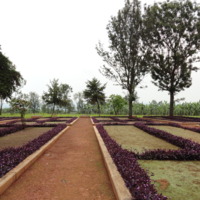
“I have faith and hope in God today,” she declared, adding, “I thank God who enabled us to survive and whichever problem one faces, God is amazingly able and is there to save those who believe in His loving mercy.”
Before I came to the USA, I told my family that before I go abroad, I wanted to first look for my tormentors, those who killed my family and others. They thought I was crazy or mad. I told my family that I was going to ask my tormentors for forgiveness. I found the person who tortured me and killed my family. I hugged the man and asked him for forgiveness for all we had done to him. Since then, I was at peace. I understand the man died last year,” she revealed to mixed reactions. “It was my faith and hope that sustained me then and today,” she confesses. Now happily married with a daughter and is expecting another child soon, Valentine said she has raised her siblings who survived with her. She commended the commemoration events which she described as giving honor and acknowledgement to those who perished during the genocide. “What others can do with 10 fingers, I do with 6 fingers, “she said displaying her chopped hand, adding, “We need to stand up and be strong, we can do it and nothing should stop us. Those who tormented me cannot win. Those who killed us should not win. They are losers. We are winners. That is my story. My message to you all is that: Be strong. That is what God does and with God, everything is possible,” she declared to a prolonged standing ovation.
As recounted by Valentine, and variously verified by other anecdotal evidence, the story of the Nyarubuye church massacre is a perplexing annotation of humanity's potential to commit and engage in acts of evil. Particularly, it highlights a narrative about the brutality meted out to infants by adults, elders they previously trusted as members of their extended families, neighbors, and providers of social safety nets. But, 22 Years after the 1994 Genocide, Rwandans Have taken a firm grip of the Present and have Set their Sights on the Future with unwavering confidence. With unity of purpose, singing from the same hymn book, they have collectively picked-up the pieces, and are lighting and smoothing-up the rugged path of transformation for the rest of the world to notice and emulate. And, by all accounts, the 22nd commemoration of the genocide against the Tutsis in Rwanda in Hurst, Texas, last April, showed that citizens of this small and mountainous Central African country have Forgiven But Not Forgotten the Past.
At the same event, a video depicting how some individuals stood up against genocide was screened. Famously referred to as UBUMUNTU, ‘Rescuers or People who saved lives’ of Tutsis during the Rwandan genocide in 1994, portrayed courageous actions of individuals who stood against so many odds to save lives. A compilation of over 20 rescuers testimonies, the documentary shows what they did and the risks they endured against their own lives to protect vulnerable Tutsis from the killer militias during the genocide.
One of the rescuers, a typical upstander and not a bystander, a young girl, against the wishes of her parents, protected and saved a Tutsi toddler from the marauding Intarahamwe who were killing any Tutsi they could land their hands on. “Go ahead of me, I will carry and protect the baby and follow you from a distance,” she says in the documentary in defiance of her parents who had demanded that she let go of the Tutsi baby to either be killed or starve to death.
Most of the nearly one million genocide victims were buried in mass graves scattered around the country. The genocide was brought to an end on July 4, 1994 when the Rwanda Patriotic Army (RPA) stormed the capital Kigali and took over power.


